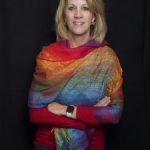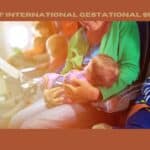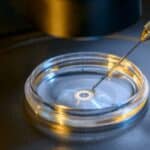Growing up, I can’t even count the number of times I watched the Disney movie The Parent Trap (the original, with Hayley Mills). It’s a cute story about identical twins separated at birth because of their parents’ divorce. In dividing assets in the breakup, each parent took one of the girls. It’s only when the girls are away at the same summer camp and meet for the first time that they put two and two together and realize they are sisters. The fun begins when they start scheming a way to get their parents back together. If you know this film, I dare you not to start singing, “Let’s get together, yeah, yeah, yeah!”
Fast forward to two recent stories in the news where siblings—born from surplus frozen embryos that were leftover from IVF, and adopted and raised by other families—have just met each other for the first time.
In Albuquerque, New Mexico, Kenedi and Quinn, both 11 years old, met when their birth mothers were chatting on a fertility blog and pieced together the facts. Kenedi and Quinn were born on the same day from embryos leftover in the same clinic. Quinn’s mom says it is nice for them to have a “genetic connection.” Kenedi says that when she’s asked about her story she tells people, “It’s complicated.”
In LaGrange, Kentucky, Jamie, age nine, and Piper, age ten, are both from Jamie’s parents. Piper was born to and adopted by another family from surplus embryos created by Jamie’s parents. Only when Piper starting asking if she could meet her biological family did the girls’ parents start discussing this option. Tom—the biological father of both girls, who is raising Jamie but not Piper—said, “You would never know that they didn’t know each other for the first 10 or nine years.” Jamie says, “We do act like sisters,” and Piper chimes in “We argue sometimes.”
While these two news stories are applauded to endorse embryo donation and adoption, and all the benefits of the new modern family, I can’t help but wonder . . . as these siblings get older, will they start working for more permanent ways to put their genetic connections back together? And what about those who don’t even know they were adopted from frozen embryos? Will they be able even to discover their genetic connections?
Author Profile

- Jennifer Lahl, MA, BSN, RN, is founder and president of The Center for Bioethics and Culture Network. Lahl couples her 25 years of experience as a pediatric critical care nurse, a hospital administrator, and a senior-level nursing manager with a deep passion to speak for those who have no voice. Lahl’s writings have appeared in various publications including Cambridge University Press, the San Francisco Chronicle, the Dallas Morning News, and the American Journal of Bioethics. As a field expert, she is routinely interviewed on radio and television including ABC, CBS, PBS, and NPR. She is also called upon to speak alongside lawmakers and members of the scientific community, even being invited to speak to members of the European Parliament in Brussels to address issues of egg trafficking; she has three times addressed the United Nations during the Commission on the Status of Women on egg and womb trafficking.
Latest entries
 infertilityApril 23, 2024The Rise of International Gestational Surrogacy in the U.S.
infertilityApril 23, 2024The Rise of International Gestational Surrogacy in the U.S. Assisted Reproductive TechnologyApril 16, 2024Founder Jennifer Lahl’s Speech on Surrogacy to the Casablanca Declaration
Assisted Reproductive TechnologyApril 16, 2024Founder Jennifer Lahl’s Speech on Surrogacy to the Casablanca Declaration #BigFertilityFebruary 27, 2024No, Alabama Didn’t Ban IVF
#BigFertilityFebruary 27, 2024No, Alabama Didn’t Ban IVF ArticleSeptember 25, 2023The Little Engine That Could
ArticleSeptember 25, 2023The Little Engine That Could

